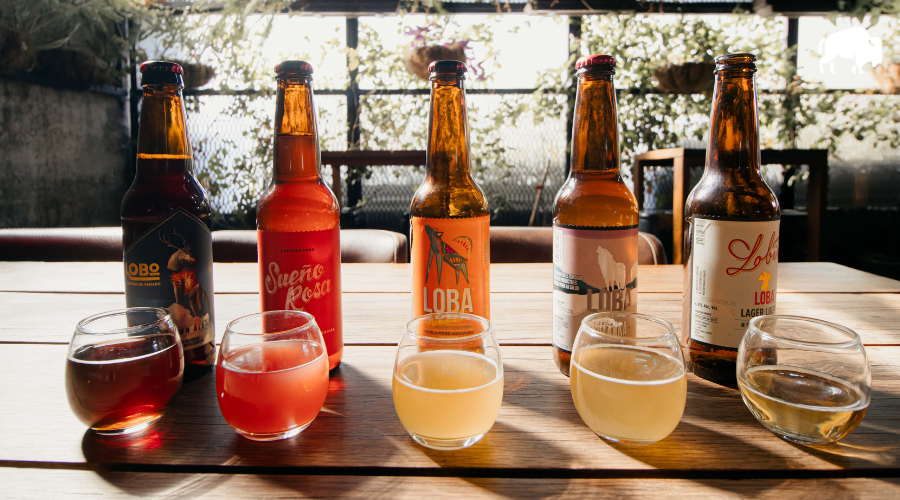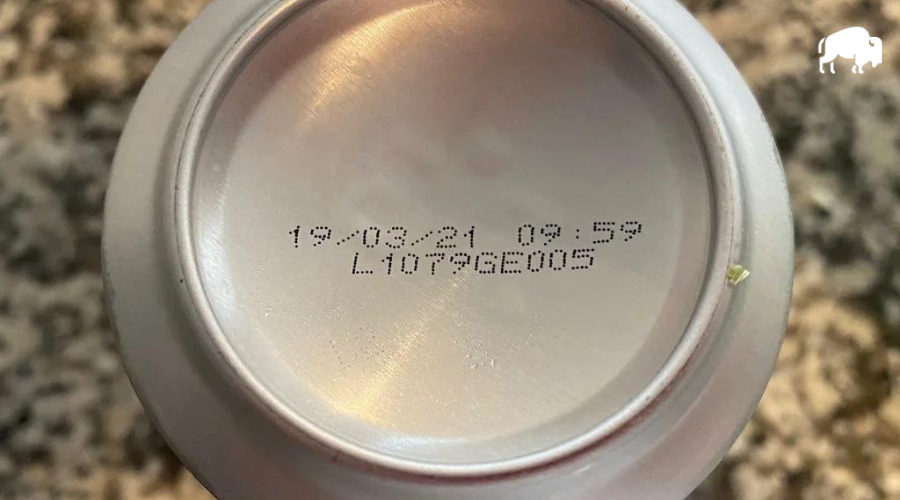
Ever come across a beer in your fridge or basement but can’t remember when you bought it? Not all beers have expiration dates on the bottle or can, so is it a risk to crack it open?
Most beer is best consumed fresh. Except for some sour or strong beers, breweries sell the beer the way they want you to consume it. Drinking most beer within 3 to 6 months is ideal. Longer than that and off-flavors may start to develop.
We’ll break down what you need to know about storing beer, how long it lasts, and what to look out for if you think it’s bad.
How long does beer last?
Most beer is best consumed the day it leaves the brewery. Brewers know what they’re doing and sell beer the way they want it to taste. Fresh beer is full of flavor, bright, and delicious. Like most aspects of beer, however, there are many exceptions.
Stronger beers, like imperial stouts and barley wines, have a longer shelf life. In fact, many of these beers actually benefit from age, acquiring richer flavors. Sour and wild beers will also develop interesting new flavors with age. These beers evolve over time because of the mix of yeast and bacterias.
As beer ages, certain flavor components change and evolve with time. Oxygen reacts with compounds from the malt, yeast, and hops to accentuate certain flavors. Other flavor components decrease with time. Generally, bitterness will decrease with time. Sweet, sherry-like flavors will increase as beer ages, as is shown below:

Sensory changes during beer aging (Dalgliesh, 1977)
Aging beer requires cool, stable temperatures in an area out of light. Like aging wine, there are many complexities and variables. For more on aging beer, we recommend reading Vintage Beer by Patrick Dawson.
For the majority of beer, how long it lasts depends on how it was packaged:
Bottled Beer

Kept in a dark and cold area, like a fridge, bottled beer will last up to 6 months. Stored warm, bottled beer can spoil in as quickly as 3 months.
Keeping beer bottles away from light prevents the development of skunky off-flavors.
Beer is extremely sensitive to light. Hop compounds are photosensitive and, when exposed to light, will be “light struck”. This is what causes the skunky off-flavor.
The Original Craft Beer Club searches out exceptional craft beers from around the country and then delivers the monthly beer club selections direct-to-your door.
Canned Beer

Cans provide the best protection against oxygen and light. The design of a can has minimal space between the lid and the beer, helping to reduce the amount of oxygen inside. On top of the geometry, cans provide 100% protection against light. Like bottles, canned beer is best consumed before 6 months if stored cold and 3 months if stored warm.
Kegged Beer

Kegged beer should always be stored cold. If you see a bar that stores their kegs warm, don’t be surprised if you come across an off-tasting beer or two.
Generally speaking, non-pasteurized kegs will start tasting bad after 45 to 60 days. For pasteurized kegs, the shelf-life is a bit longer at 3 to 4 months.
If you purchase a commercial keg and use a party pump to serve, the beer will only last about 12 to 24 hours once tapped. This is because air is pumped in to push out the beer, causing rapid staling and flat beer.
Growlers and Crowlers
Many bars, brewpubs, and breweries fill growlers and crowlers directly from their taps so you can enjoy fresh beer from the comfort of your home. This beer is meant to be drunk fresh. Unless a specific filling machine is used, the beer is exposed to a lot of oxygen when it’s filled. This causes rapid degradation of the beer’s flavor. It’s advised to drink a growler or crowler within 36 hours of being filled.
How can you tell if beer is bad?
Most beers have the best before date listed on the can, bottle, or case. Certain regions require breweries to list an expiration by law. These days, most craft breweries print an “Enjoy By” date, which should be followed if possible. This is a date that the brewers recommend their product be consumed by. Always check the best-before date but don’t make a final judgement on the beer before you pour it in the glass.

For pale beer styles, an expired beer will appear darker. Oxidative effects on malt and hops will give a stale, cardboard-like flavor. For very hoppy beers, like IPA and American pale ale, oxidation can have a quick and obvious effect on the beer. Old hoppy beer will have lost almost all hop flavor and turn a brownish, even purple, color.
These beers are safe to drink but they won’t taste or look as the brewery intended.
Unless a beer is deliberately acidic, like sour beer, it should not taste sour or vinegar-like. This is not a typical characteristic of aged beer. The beer has been contaminated with a wild bacteria and should not be consumed
If the beer has lost all carbonation, this is a sign of a bad seal on the can or bottle. In this case, dispose of the beer as the airtight seal has been broken.
What is the best way to store beer?
For the most part, beer is best stored at fridge temperatures – between 35°F and 46°F.
To age beer, it’s best to store at cellar temperatures, about 52°F to 55°F. At this temperature, the aging process will be slowed, but not completely stopped.
Final Thoughts
Beer is always great when it’s fresh. That doesn’t mean you need to drink your whole 24-pack in a week. Stored correctly, beer lasts a long time. It’s always fun to experiment with aging beer, too.
If you stick to the guidelines above, you should always have a fridge full of tasty, fresh beer.
Frequently Asked Questions
Will I get sick drinking expired beer?
Normally, no.
Beer is a fermented beverage which has a great protection against harmful pathogens due to the low pH and alcohol. If the beer tastes fine, it’s safe to drink. If you come across a beer with strange off-flavors, it’s best to dump it and crack a fresh one.
How fast do I need to drink IPA?
Many craft breweries and beer geeks emphasize drinking IPAs as quickly as possible. This is because when beer is loaded with hops, oxidation can take place quickly and with significant flavor changes. If an IPA is properly packaged, it should taste great for months. Hop flavor does fade quickly though. For the most pungent hop character, it’s best to drink IPA within a few weeks of packaging.


